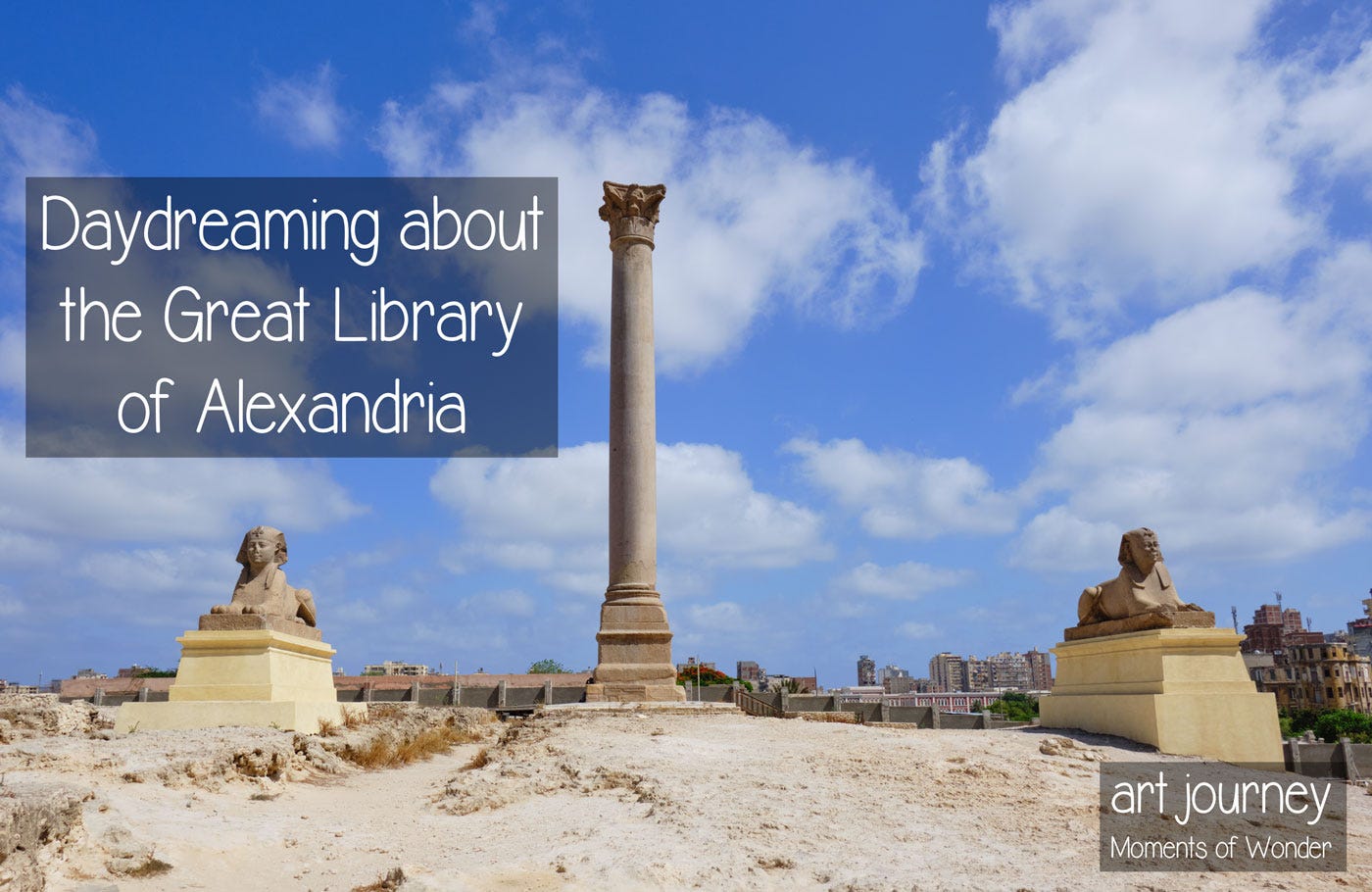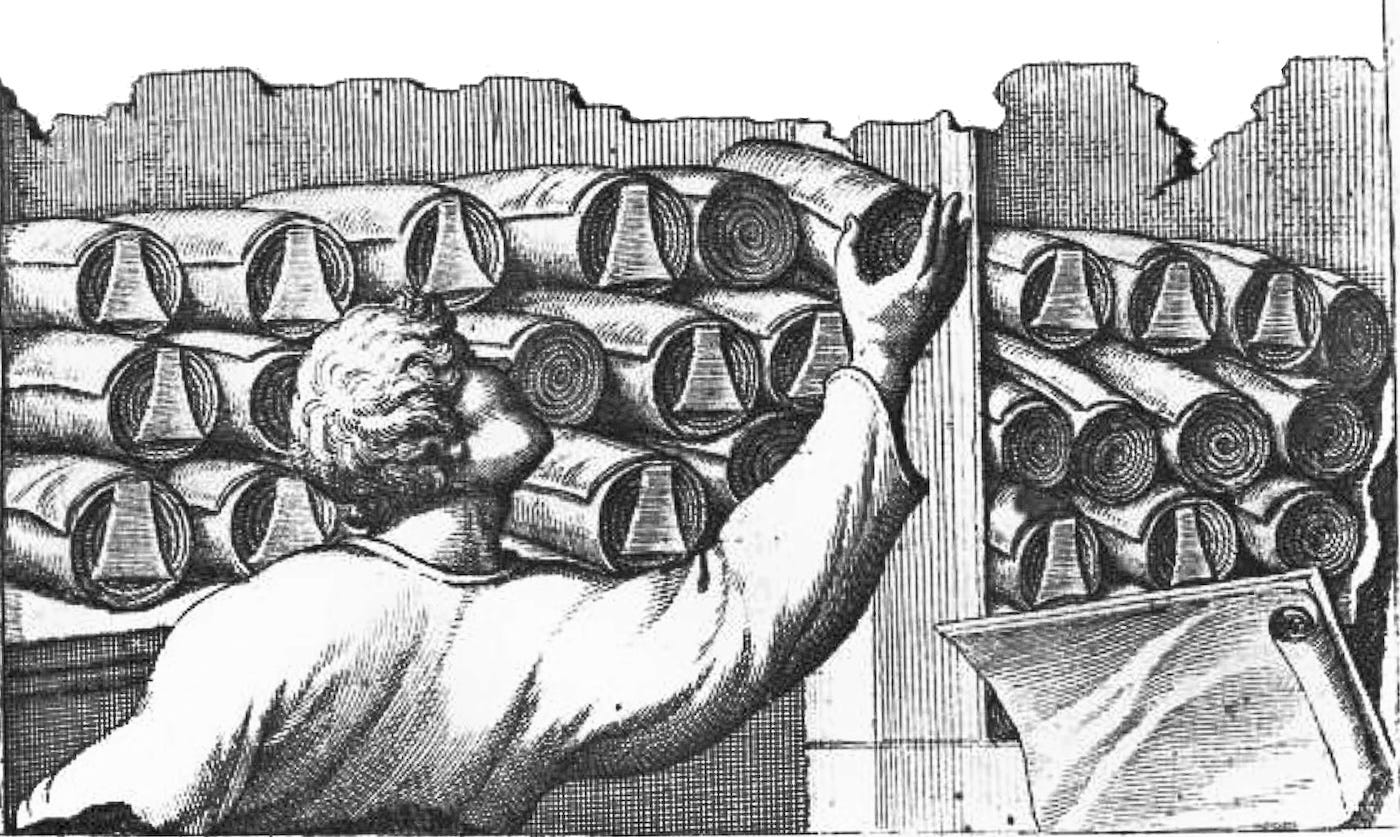Daydreaming about the Great Library of Alexandria
Walking around Alexandria searching for the greatest library of the ancient world.
Dear reader, in the first part of this stroll into the past, "Daydreams of time travel searching for Alexandria's Lighthouse," we discovered the remains of the Lighthouse.
This story searches for the wonder on the other side of the harbor: the Great Library of Alexandria. The first thing I did after arriving in Alexandria was head to the new Library, the Bibliotheca Alexandrina.
It is an impressive modern building, situated just a few meters from the sea, offering a haven for knowledge seekers.
At first, I admired the architecture and how it shelters readers from the harshness of the sun and strong winds outside. Then, I wandered around in search of books that would help me answer the question: What happened to the Great Library of Alexandria?
Who destroyed the Great Library of Alexandria?
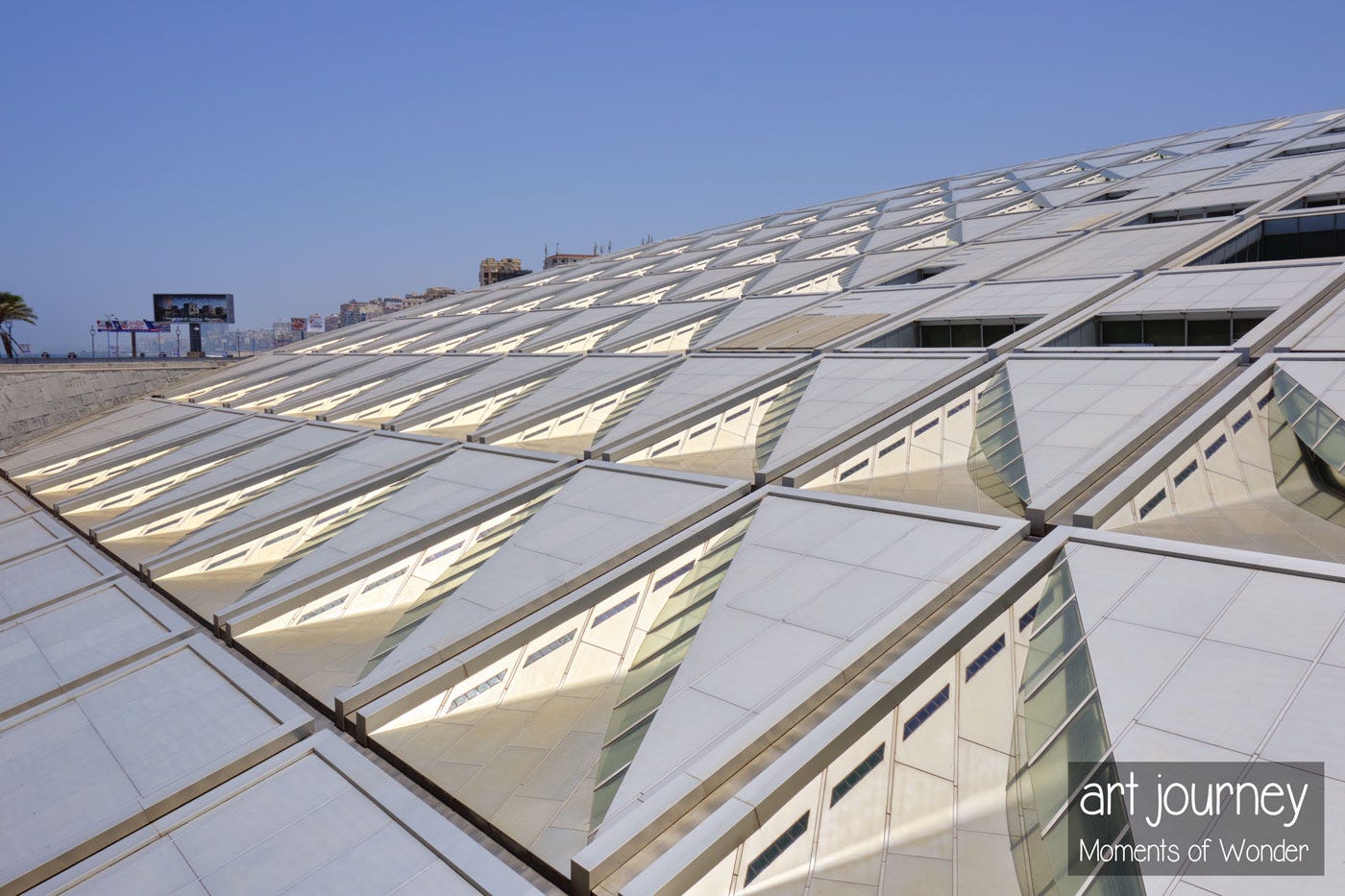
As I try to find something that no longer exists, the first question to answer is, what happened? Who destroyed the Great Library of Alexandria?
These words and images were not generated by AI or sourced from social media. So buckle up, dear reader, and be awed by the power of facts. To begin with, most of what you have been told about the Great Library of Alexandria is not true.
There is no need to take my word for it. In an introduction to the new Bibliotheca Alexandrina, the section titled 'Destruction of the Ancient Library' states:
Alexandria, of all the Greek cities, was the most frequently racked by invasions and civil strife throughout history.
It was inevitable that the Ancient Library would also suffer from these troubles.
Who, when, or what was directly responsible for its ultimate destruction is still unknown, regardless of the many stories or accounts.
These words were written by Dr. Mohsen Zahran, one of the driving forces behind the creation of the new Alexandria Library.
They reveal the stark reality: a vast gap exists between myth and reality. This is why, dear reader, we are not writing a movie script about Caesar or barbarians torching libraries, but laying out the facts.
The true story of the Great Library of Alexandria
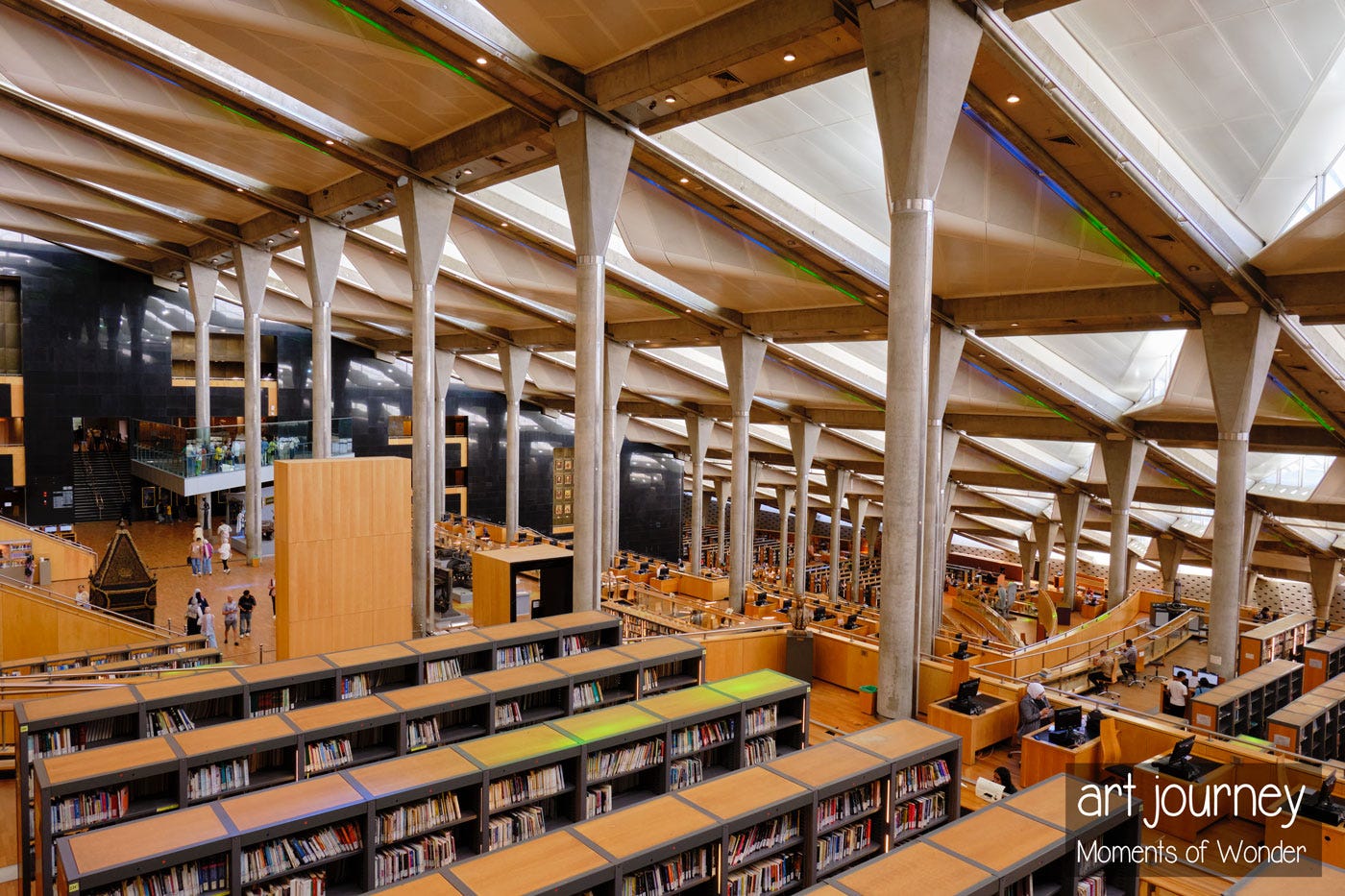
The fact is that there is no single contemporary account of a Library building. None whatsoever. There is only one description of an edifice that may be related. Here it is.
It [Alexandria] also contains very beautiful public grounds and royal palaces, which occupy a fourth or even a third part of its whole extent.
In that royal quarter was a Mouseion, Greek for Museum:
The Museum is a part of the palaces.
It has a public walk and a place furnished with seats, and a large hall, in which the men of learning, who belong to the Museum, take their common meal.
This community possesses also property in common; and a priest, formerly appointed by the Kings, but at present by Caesar, presides over the Museum.
In the Greek world, a Mouseion is a shrine to the Muses; the goddesses of the arts. A Mouseion needs to be understood as akin to a Literary Society, where members worshipped the Muses, held literary competitions, and philosophical debates took place.
Now, there is an important clue linking the Mouseion to the Library; when a Greek author mocks scholars:
In the populous land of Egypt many are they who get fed, cloistered bookworms, endlessly arguing in the bird-coop of the Muses.
Bookworms arguing in a shrine to the Muses... Where there are scholars, there are books. For the sake of clarity, one should assume that 'Museum' and 'Library' are interchangeable words.
The number of books held in the Great Library of Alexandria
The issue is that authors give us widely different estimates. They wrote from a few centuries to one millennium after the Library's foundation, only making the picture blurrier. Organized by size, the numbers are:
- 40,000; 54,800; 70,000; 200,000; 400,000; 490,000 or 700,000 books.
And before discussing whether the Library was burnt at all, the question should be, how many of these books remain?
Let's do the calculation together. The total number of words from ancient Greece we have today is 3,773,000. In roll form—books inside the Library were papyrus rolls—that amounts to around 300 books. Hence:
- Compared to the low estimate of 40,000 books, 0,0075 %.
- Compared to the high estimate of 700,000 books, 0,00043 %
What remains of Alexandria's Library? Not one stone from the building, and almost nothing in terms of books.
Is there any evidence of the burning of the Library?
The author who described the Museum visited about twenty years after Caesar supposedly torched it, and doesn't mention such a tragic story.
Several ancient authors indeed accuse Caesar of having burnt the Library of Alexandria. Yet, one says he burned 40,000 books, while others claim he destroyed 700,000 books. Which is it?
The issue is that authors often quote each other, and an educated guess becomes fact. Over the centuries, the myth of the Library of Alexandria only grew, to the point we all know as fact that it was burned.
Yet, as stated before, "who, when, or what was directly responsible for its ultimate destruction is still unknown."
Furthermore, there are mentions of the Library four centuries after its supposed destruction.
Survival of the Library of Alexandria

Dear reader, we are here to wonder at the power of facts. The stela above was dedicated to Tiberius Claudius Babillus, who served as Director of the Library of Alexandria and died in 56 AD, one hundred years after Caesar allegedly burned the Library.
We also know that Emperor Hadrian visited the Museum in 130 AD.
In the Museum at Alexandria he propounded many questions to the teachers and answered himself what he had propounded.
Around 200 AD, we have:
And concerning the number of books, the establishing of libraries, and the collection in the Hall of the Muses, why need I even speak, since they are in all men's memories?
One of the last mentions of a Mouseion or Library dates from around 380 AD, about the philosopher Theon:
The man from the Mouseion an Egyptian, a philosopher, a contemporary of Pappos the philosopher who was also an Alexandrian.
The end of the Libraries of Alexandria
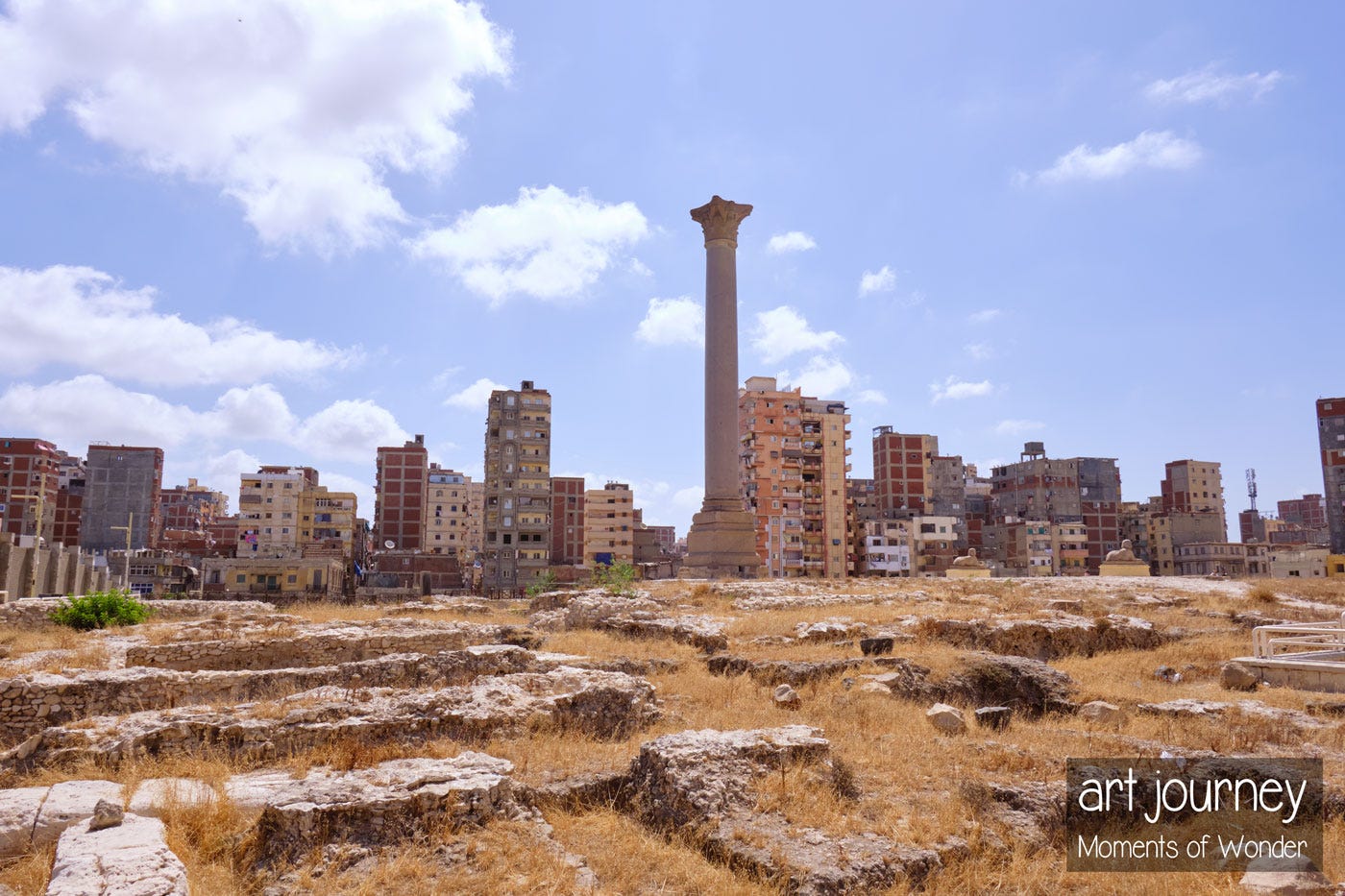
There were two major libraries in Alexandria, one part of the Mouseion, the Great Library. And a second part of the Serapeum temple.
And there arose in addition to this library a second up in the Serapeum, called its daughter.
Another author, centuries later, states that the Library of the Serapeum contained 42,800 books. Then, in 391 AD, during the reign of Emperor Theodosius, this happened:
At the solicitation of Theophilus, bishop of Alexandria, the Emperor issued an order at this time for the demolition of the heathen temples in that city.
Seizing this opportunity, Theophilus exerted himself to the utmost to expose the pagan mysteries to contempt. Then he destroyed the Serapeum.
At around that time, another author mourns that:
The libraries are shut up forever like tombs.
Three hundred years later, an author states:
And in those days [the reign of Emperor Theodosius], the orthodox inhabitants of Alexandria were filled with zeal and they collected a large quantity of wood and burned the place of the heathen philosophers.
None of these texts clearly describes the wilful torching of the Great Library nor the Serapeum Library.
Yes, dear reader, trying to make sense of the fate of the Great Library of Alexandria is a head-spinning endeavor. What proved to be the downfall of the Great Library? Invasions? Earthquakes and tsunamis? Religious zealots?
Whomever, or whatever, we do not know.
The Library of Alexandria, so close, so far away
The oldest papyrus discovered in Egypt is 4,500 years old. Egypt's climate is arid, making it an ideal environment for documents written on papyrus to survive for centuries, potentially even to the present day.
Alexandria's Library was located between the sea and a lake. Humidity alone would have been its downfall. Not something to spark the imagination or to interest movie producers.
Ancient Alexandria has long since disappeared beneath the modern city. However, from 1960, the remains of the Lighthouse began to be discovered.
Then, in 1992, the Royal Quarter—site of the Museum, Library, and Alexander's tomb—began to reappear underwater. With the video above, you can stroll with Franck Goddio's divers in the Royal Quarter of Alexandria.
Then, in 2007, in the Shallalat Gardens, as visible in the image below:

The Hellenic Research Institute of Alexandrian Civilization has been conducting excavations and, in 2009, discovered a half-size marble statue. From style, context—found in the royal quarter area—and the fact that it wears a royal diadem, it is likely a Hellenistic ruler.

Which one? There were Greek rulers there for three centuries, so while it is tempting to expect it is Alexander the Great, there is no way to be sure.
Sharing the Library of Alexandria so it becomes eternal
In your hands, dear reader, if you're reading from a smartphone, is a shiny device capable of containing thousands of books in PDF form. If you read on a home computer, with an external hard drive, you can preserve a Great Library's worth of books. Yes, 700,000 books.
You do not need to be a King to afford such a library. Browse the internet and marvel at the fact that many national or university libraries provide free access not just to printed books, but also to high-quality scans of manuscripts and documents that are usually accessible only to experts.
In other words, this stroll around Alexandria, searching for the Lighthouse and Great Library, did not just result in daydreaming at a few statues and remains.
Pondering the loss of 99,99% of the greatest library of the ancient world, the conclusion is that we can all play our part to prevent such a tragedy from happening ever again.
Dear reader, by visiting a museum, a library, purchasing books, or reading fact-based articles online, you are a part of the edifice that preserves mankind's knowledge. There's the Moment of Wonder.
Sources
THE NEW BIBLIOTHECA ALEXANDRINA, reflections on a journey of achievements.
Hellenistic Egypt: the Alexandria Museum.
Timon of Phlius wrote the sarcastic “bookworms, endlessly arguing in the bird-coop of the Muses”.
The Deipnosophistae of Athenaeus.
The Great Library of Alexandria.
The Roman History of Ammianus Marcellinus.
John, Bishop of Nikiu: Chronicle. London (1916). English Translation.
Theon, the man from the Mouseion, an Egyptian, a philosopher.
Roger S. Bagnall; Alexandria: Library of Dreams.
The Great Library of Alexandria: The Untold Story Explained.
Alexandria - The Ancient Portus Magnus.
I'm an Archaeologist Excavating Alexander the Great's Buried City
Hellenic Research Institute of Alexandrian Civilization.





